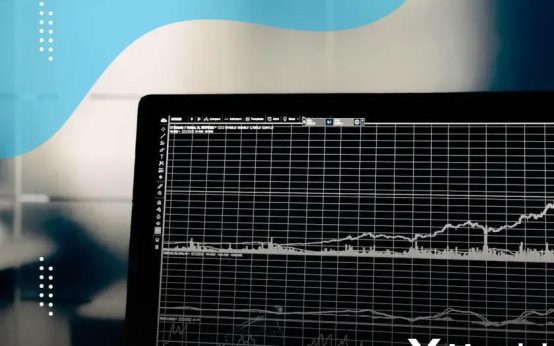
The fiscal uncertainties under the Trump administration have sparked significant discussions. As the red wave gains momentum, it’s crucial to examine how fiscal policies might shift and impact the country’s economic trajectory. In this in-depth overview, we’ll explore the implications of Trump’s fiscal decisions and predict future market reactions.
Impact of Red Wave on Fiscal Policies
The Red Wave has significantly influenced fiscal policies under the Trump administration. A primary focus has been on tax reforms, aiming to stimulate economic growth. By implementing tax cuts, the administration sought to encourage businesses to invest domestically, ultimately boosting job creation and increasing household income.
Simultaneously, there is an emphasis on reducing government spending to control the national deficit. This approach entails re-evaluating welfare programs and cutting down on federal expenses, which has sparked debates on its long-term sustainability and impact on public services.
The Red Wave also brought about deregulation in various sectors, a move perceived as removing barriers for corporations, thereby facilitating a freer market environment. However, critics argue that such measures could undermine regulatory safeguards essential for environmental protection and consumer rights.
Understanding these fiscal policies is crucial for assessing the economic landscape. The interplay between reducing fiscal restraints and fostering a pro-business environment remains a focal point in discussions about America’s financial strategies.
Understanding Trump’s Fiscal Decisions

The fiscal decisions made during the Trump administration have led to debates on economic policies and their long-term impacts on the economy. A perceived red wave has further fueled discussions about the fiscal trajectory of the United States.
During Trump’s tenure, there were significant tax cuts, especially for individuals and corporations. This Tax Cuts and Jobs Act, aimed at reducing tax burdens, was one of the administration’s flagship fiscal policies. Supporters claimed it would spur economic growth by increasing disposable income, while critics feared it would significantly raise the federal deficit.
A key consideration was the balance between fiscal stimulation and maintaining fiscal responsibility. The administration insisted that the reductions would pay for themselves through increased economic activity, but the actual outcome remains a subject of debate among economists.
Moreover, the focus on deregulation also played into the fiscal strategy, with the belief that a less regulated market would enhance business opportunities and economic growth. The impact of these decisions has been dissected from various perspectives, analyzing short-term gains against potential long-term costs.
It’s crucial to evaluate how these fiscal policies affect not only present economic conditions but also future fiscal stability. The decisions taken are continuously scrutinized for their effect on the fiscal roadmap of the country, with special attention to how they align or conflict with traditional fiscal responsibilities.
Future Projections and Market Reactions
During the Trump administration, fiscal policies were subjected to significant uncertainties, influencing market reactions and future projections. Experts anticipate that any continuation of the Red Wave may further transform the fiscal landscape. This could lead to significant adjustments in government spending and taxation, directly affecting economic stability.
In a scenario that might resemble the previous administration, adjustments in corporate taxes and deregulation efforts are likely to bolster short-term market optimism. However, economic experts caution that long-term growth projections could be compromised by increasing national debt and potential inflation.
Additionally, market behavior could align closely with fiscal policy announcements, triggering increased volatility. Traders and investors may respond to macroeconomic indicators, predicting potential shifts in policy that could impact sectors reliant on federal funding.
In essence, the ongoing discussions around fiscal policy trajectories under a renewed Republican influence hint at an unpredictable yet potentially profitable period for financial markets. Industry leaders and analysts recommend a vigilant approach, keeping a watchful eye on policy developments and regulatory changes that could influence market forecasts.
Comparative Analysis of Fiscal Approaches
In the wake of the Trump administration’s fiscal measures, a comparative analysis sheds light on the various approaches that have been adopted. The fiscal policies during this period exhibited unique characteristics compared to previous administrations.
Historical Context
The fiscal trajectory witnessed significant changes as the administration implemented substantial tax cuts, aimed at boosting economic growth. This approach focused on supply-side economics, assuming that reduced taxes would spur investment and expand the economy.
Other Approaches
Historically, administrations have balanced fiscal policies with tax increases and spending cuts to manage deficits. However, the Trump administration’s strategy leaned towards increased spending paired with tax reductions, leading to a meteoric rise in the national deficit.
Global Perspectives
Comparing this to European approaches, many countries across the Atlantic prefer austerity measures during economic downturns, aiming to reduce debt levels effectively. The juxtaposition reveals a stark difference in managing fiscal health and economic stability.
Implications of Different Strategies
Fiscal strategies significantly affect the domestic economy and global market perceptions. While higher deficits might temporarily fuel growth, they could pose long-term risks, such as inflationary pressures or higher borrowing costs. Contrarily, austerity might slow growth but stabilizes fiscal health.
Understanding these divergent approaches helps gauge the potential outcomes of fiscal policies and their impact on economic growth and stability. It urges policymakers to strike a balance, ensuring both short-term economic boosts and long-term fiscal sustainability.


 Diversification Benefits: Explore Risks with Alternative Investments
Diversification Benefits: Explore Risks with Alternative Investments  How to Detect Unauthorized Transactions Fast and Securely
How to Detect Unauthorized Transactions Fast and Securely  Foreign Transaction Fees: How They Affect Travelers’ Budgets
Foreign Transaction Fees: How They Affect Travelers’ Budgets